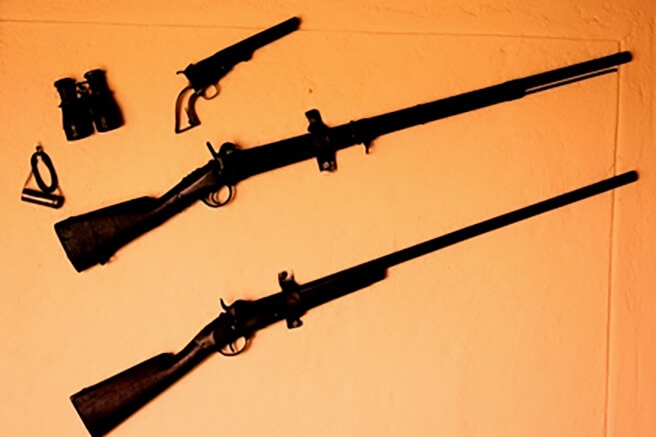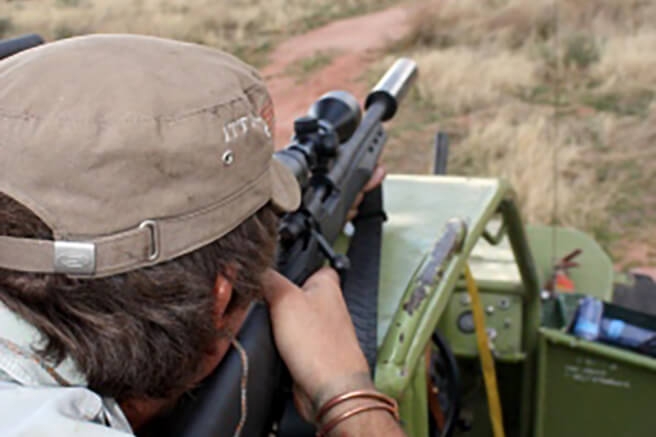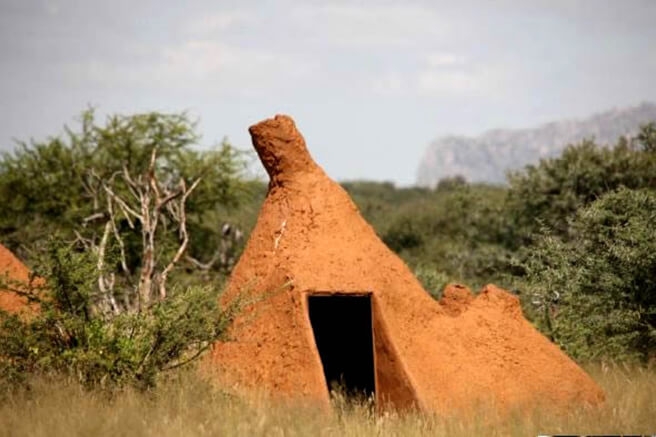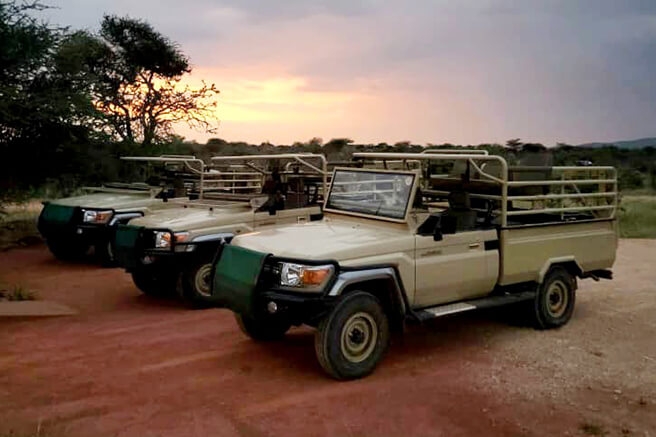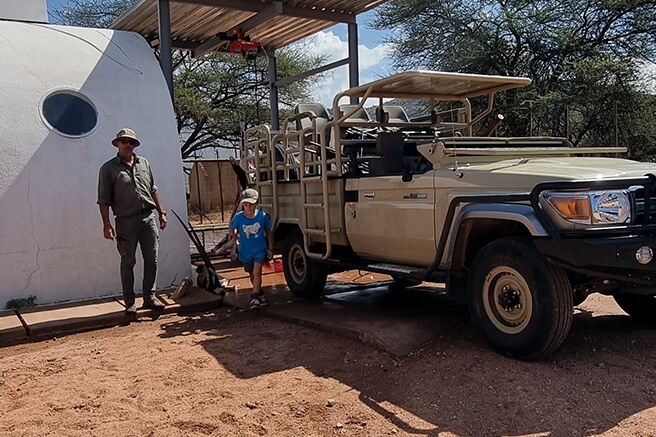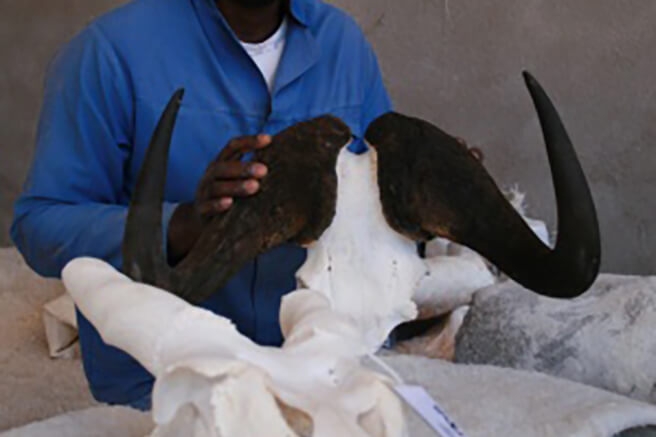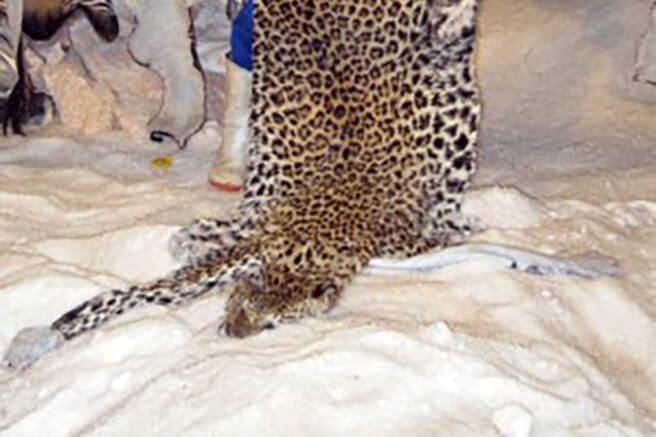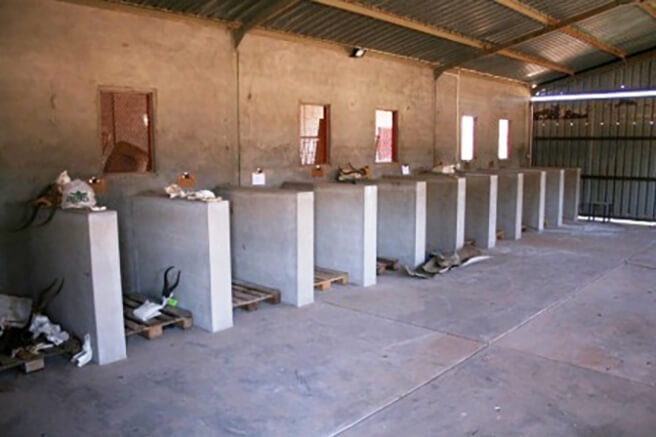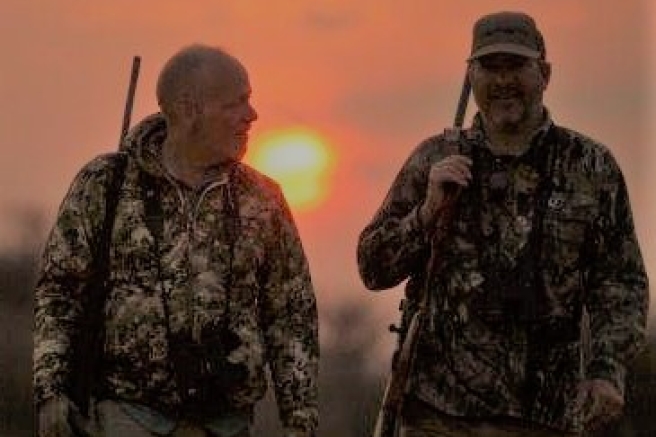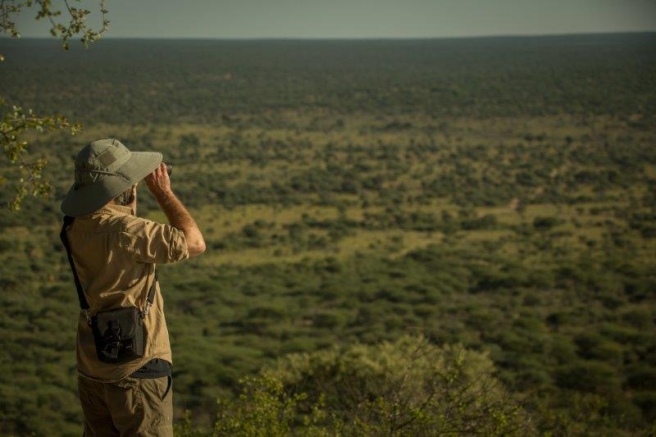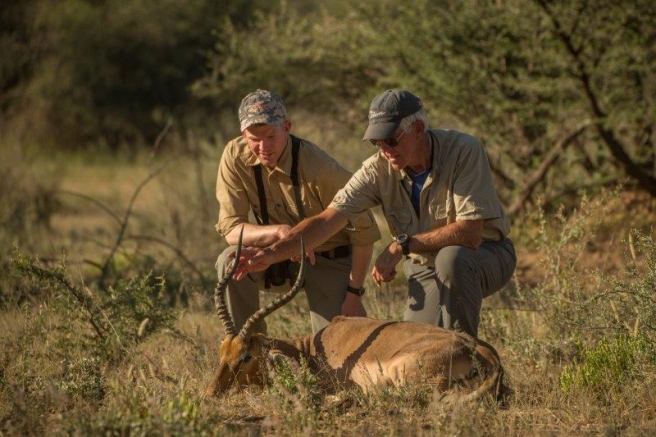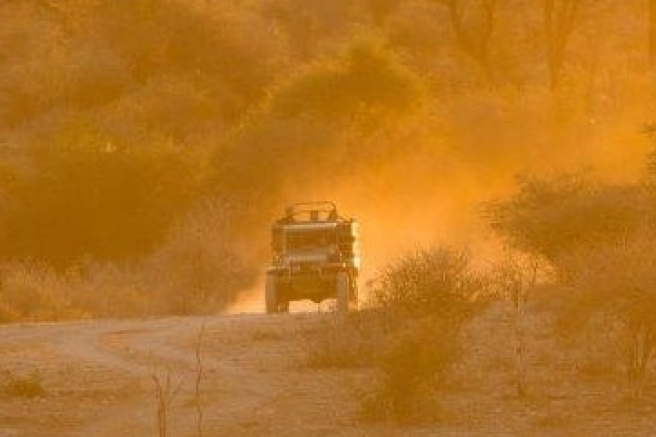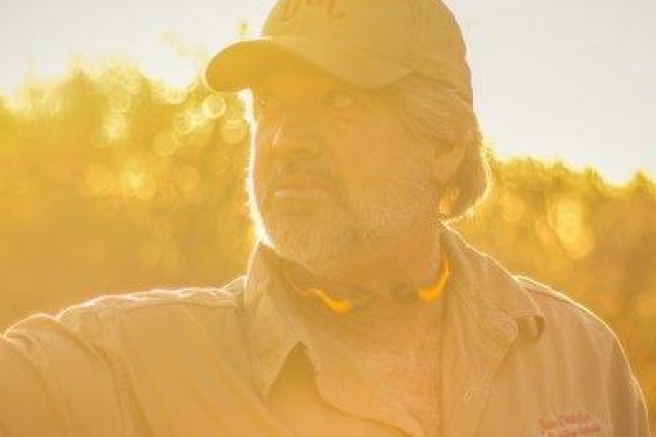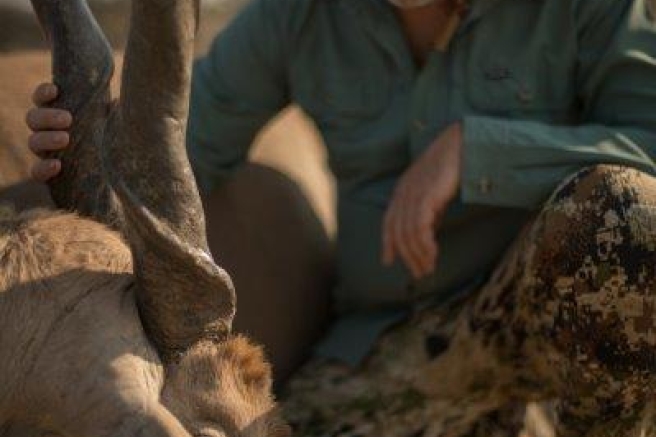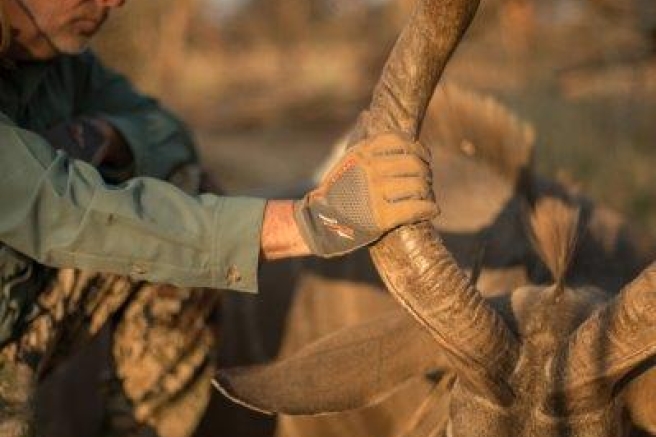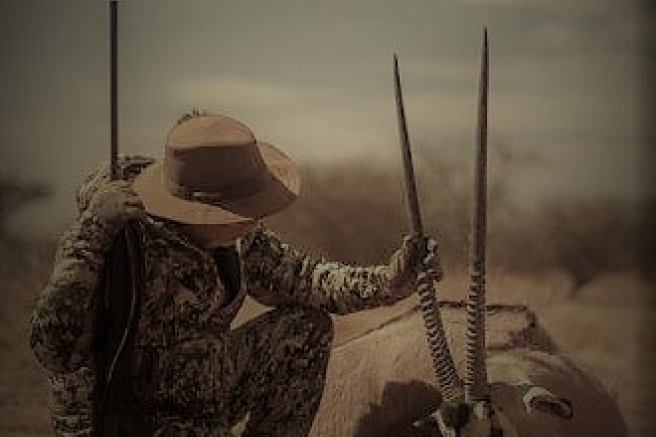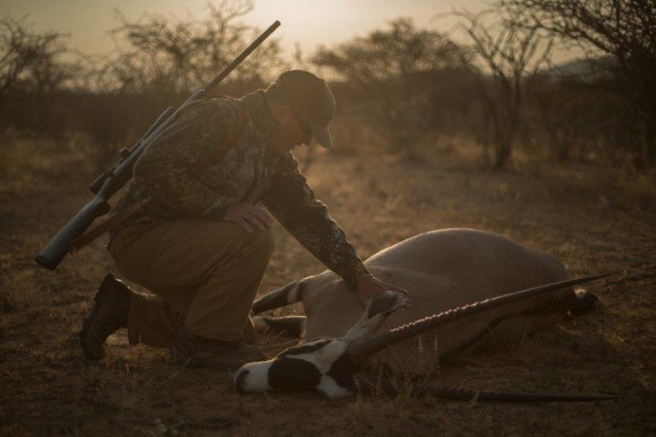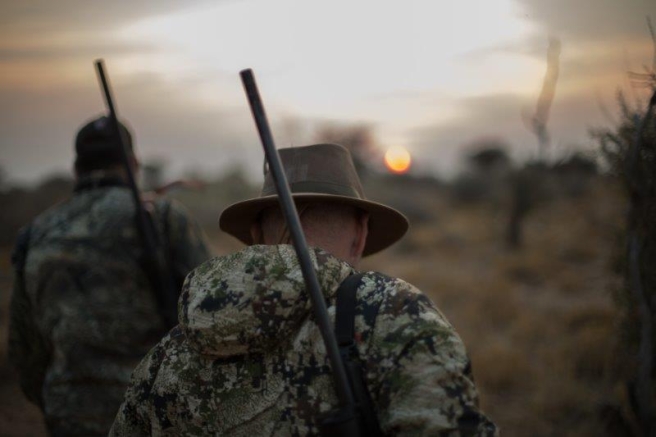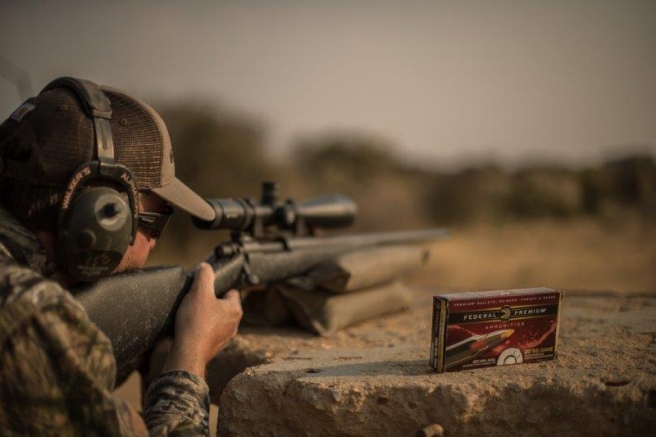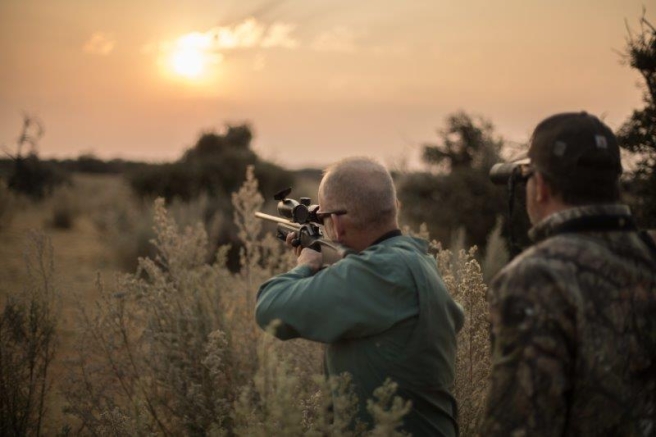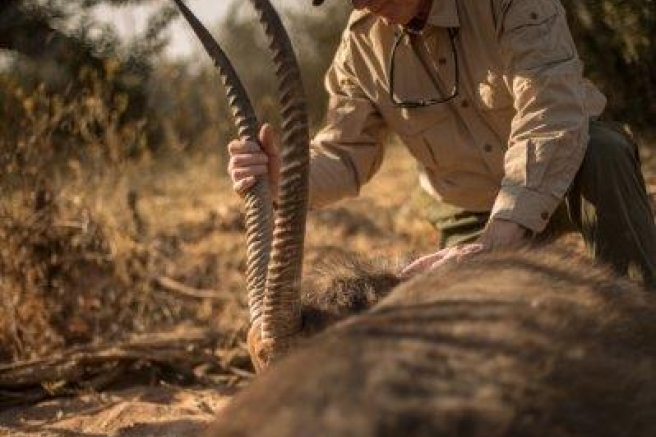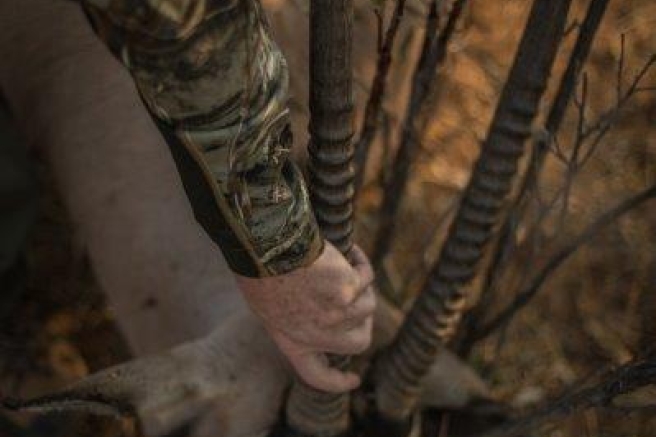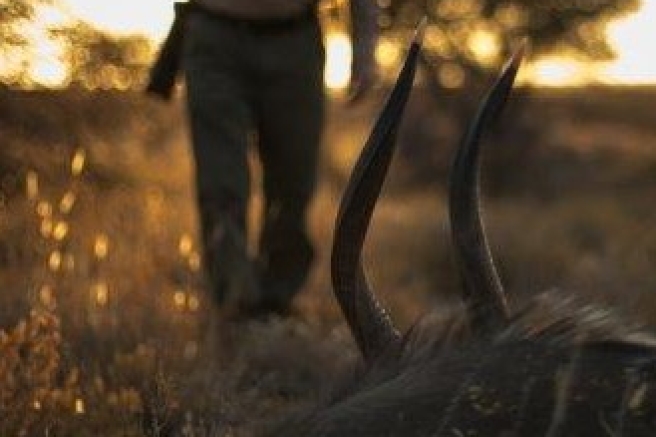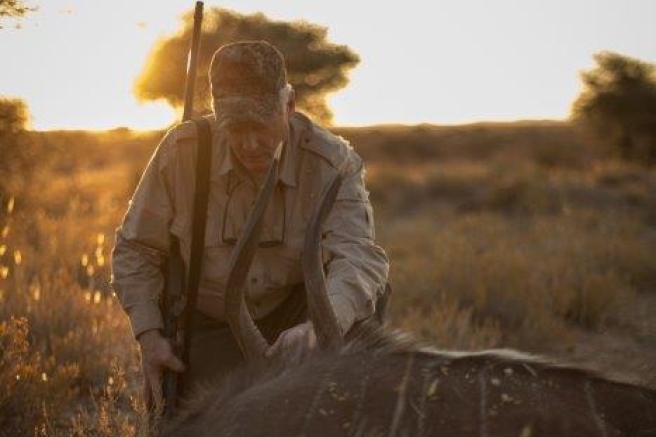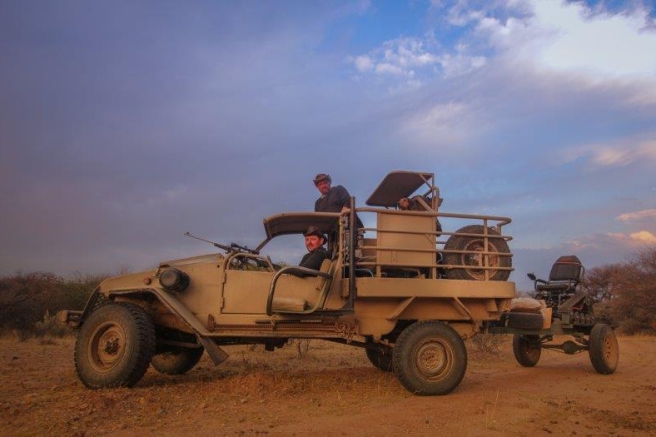On an 80 000 acre large privately owned property, home to all the big game such as elephants, white & black rhino, hippo, leopard, cheetah and lion, as well as all the other species on our price list and many more, your hunt will will be truly an African experience. Once you leave the hunting lodge, you will be on hunting grounds, in the midst of pristine Namibian wilderness, teeming with wildlife. The diverse Namibian landscape includes mountain ranges, savanna, bush and open grass plains and provides a habitat for a wide range of animals. Hundreds of different bird species thrive in our area, as do non-huntable rare species such as the serval, bat-eared fox, aardwolf and aardvark. Another 120 000 acres of surrounding concession area are available for hunting species whose territories are more extensive, such as leopard.
The hunt is configured according to your very personal requirements and expectations. Elderly and disabled clients are able to approach most species by car, but other hunters prefer a good stalk. Parents taking their children on a first time hunt can rest assured that our PHs are excellent mentors of the hunting trade. Non-hunting observers are welcome to come along on the hunting adventure. Many of our clients bring along their families.
Below promotional film features PH Steve Tors and son Oliver Tors on hunting expedition. Filmed, directed and compiled by PH Rudie de Klerk at Jan Oelofse Hunting Safaris in March 2014.
Namibian Hunting Season: February - November
The hunting area varies geographically and throughout seasons. Savannahs, grass plains and mountain stretches provide a diverse habitat for various species and will allow for great hunting and photography.
During winter (June - August), temperatures may be below freezing (32 degrees Fahrenheit) in the early mornings and at night, but will increase substantially throughout the day. Hunting during the Namibian winter season is recommendable in general because of the colder temperatures and particularly for bow hunting. Winter is dry in Namibia, and animals frequently visit the water holes equipped with bow hunting blinds during this time. Snakes are very rarely seen during winter months.
During summer months (December - February), temperatures in Namibia reach temperatures of up to 35 degrees Celsius (100 degrees Fahrenheit). Rainfalls are heaviest during December and January. Landscapes in Namibia are beautiful during February, with abundant water and trees and grasses in bloom.
Autumn (March - May) is relatively warm, with temperatures of around 25 degrees Celsius (77 degrees Fahrenheit). Temperatures are moderate to mild, the grass and bush still thick but with a yellow hue. Usually no rainfalls during autumn months.
During spring time (September - November), temperatures are around 25 degrees Celsius (77 degrees Fahrenheit). Some early rain might occur, but otherwise the landscapes are very dry.

